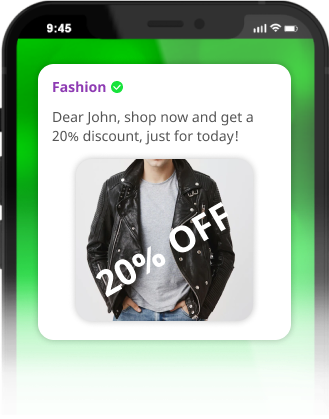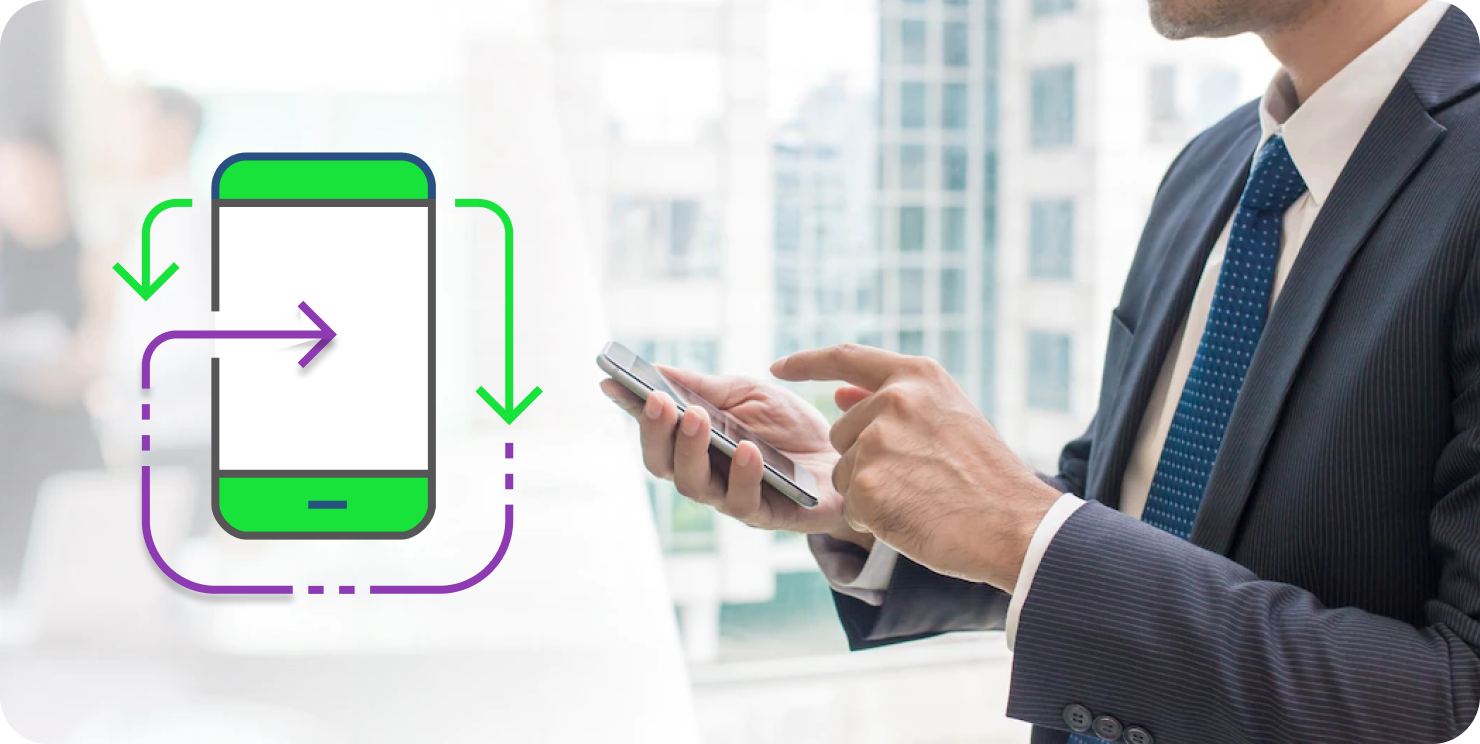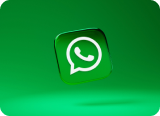Viber Business Messages – A Quick Guide to Understanding and Using Them for Your Business!
Viber is among the most popular messaging tools today, not just for personal communication but also for all kinds of business communication. With more than 1 billion users globally across 190 countries, rich messaging capabilities, and secure end-to-end encryption, Viber is increasingly being used by businesses looking to improve their customer service, prevent churn, and boost sales by connecting directly with customers throughout their purchase journey.

 What is Viber for Business?
What is Viber for Business?
Viber for Business is a powerful tool for brands to manage their customer relationships over messaging. It has a number of solutions that are geared toward helping businesses connect with their customers over an official channel. Viber Business Messages is a key offering of Viber for Business that enables customer-focused companies to share multiple types of messages with customers using the same channel. To send business messages via Viber, brands first need to register with an official messaging partner of Viber and request a Viber Business Profile. Once the profile is reviewed and approved by Viber, they can start sending messages from this official business account. Not only does this build trust and boost a brand’s public image online, it also drives up conversions significantly.
 Why You Shouldn’t Ignore Viber Business Messages API as a Communication Tool
Why You Shouldn’t Ignore Viber Business Messages API as a Communication Tool
It’s no secret that being present on multiple channels gives brands an edge when it comes to connecting with customers. The Viber API Business Messages channel is a serious contender for companies looking to step up their customer communication due to its many advantages. First, it empowers brands to initiate conversations over messaging using only a phone number. Second, this channel can be easily connected with a CRM platform, which helps to creates a frictionless and personalized customer experience. Third, the channel comes with automated chatbot capabilities that improve operational efficiency and help to provide 24/7 customer support. Fourth, Viber API Business Messages has a number of optionally available rich features such as emojis, GIFs, images, QR codes, interactive buttons, direct links, and stickers that increase the appeal of such messages viz-a-viz other channels like SMS. Fifth, they are cost-effective because businesses are charged only when these messages are delivered. And finally, they are highly secure and HTTPS only, creating an instant sense of security.
 Different Types of Viber Business Messages
Different Types of Viber Business Messages
Viber Business Messages are primarily of three types — transactional, promotional, and conversational — with each performing a different set of functions.
Transactional Messages: These are company-initiated, text-only messages sent to customers automatically to inform them of any important update. They are triggered each time there is a change that customers should be made aware of. Businesses can select as many triggers as they want based on how closely they want to keep the users updated, for example:
- account activation messages (verification codes, welcome messages)
- order-related updates (purchase receipts, confirmation links)
- shipment-related updates
- back-in-stock notifications
- travel-related alerts (QR codes of e-tickets, flight timing changes, etc.)
The chief purpose of these messages is to keep users informed.
Promotional Messages: Promotional messages, as the name suggests, are primarily used to recommend products to particular segments of customers based on their demographics, interest, browsing history, etc. Businesses can share information related to:
- new product launches
- live streams / tutorials / events, etc.
- hot deals
- back-in-stock messages, etc.
to keep loyal customers informed, or to re-engage inactive customers. Such messages can have images, files, and buttons that are all geared toward gently nudging users toward purchases, to woo back dormant customers, or simply to keep them informed about the business’ activities.

Conversational Messages: These two-way messages, also called sessions messages, simplify conversations between brands and customers. They are best for dealing with customer service queries as well as for collecting feedback from customers. If customers are facing any issue, they can directly send a Viber message to the business instead of calling them and being put on hold or drafting complicated emails. Interactive in nature, they help businesses have real conversations with customers, no matter what stage of their journey customers are at. Also, customers love the convenience of simply messaging a business.
 Top Use Cases of Viber Business Messages
Top Use Cases of Viber Business Messages
Viber API provides a great way for brands to engage in high-quality, one-to-one interactions with customers and provide them with a seamless customer experience. Brands are getting more and more innovative when it comes to using Viber Business Messages to building stronger customer relationships. Some of the top use cases of these messages are:
- Helping Customers Select the Right Product: Viber enables intelligent product recommendations and personalized sales assistance based on a user’s past interactions with the brand. Brands can share images, product tutorial videos, stickers, etc. to make the message more appealing for users and increase the chances of users making a purchase. They can share direct purchase CTAs to increase conversions. Viber provides excellent cross-sell and up-sell opportunities and helps to increase sales leads.
- Sharing Purchase-Relate Alerts: Once users have purchased a product, they can be sent invoices, receipts, transaction confirmation alerts, etc. on Viber.
- Tracking Deliveries: All shipment-related alerts, such as delivery date and time, the delivery person’s details, unforeseen delay announcements, etc. can be shared on Viber. Users can also reach out to request last-minute address or timing changes, and businesses can bolster their image by accommodating these changes.
- Providing After-Sales Support: A brand’s job doesn’t end with a sale. Providing after-sales support is equally critical. Customers can reach out with complaints and questions regarding a product. Two-way file sharing enables companies to share user manuals on Viber. Customers can also upload pictures, for example of damaged products, and order a refund.
- Sharing Back-in-Stock Alerts: Viber can help to recover abandoned carts as well as reach out to dormant customers with exclusive discounts.
- Sending Reminders: This is especially useful for the finance and healthcare sector. Banks can share reminders about pending credit card payments, healthcare institutes can share reminders about upcoming appointments.

 How to Announce the Viber Business Messaging Service to Customers
How to Announce the Viber Business Messaging Service to Customers
Brands can only message a customer after the latter has initiated the conversation. For this to happen, the customer needs to be made aware that the Viber app on their phone has a Viber Business Profile. Brands can create awareness in a number of ways:
QR Codes: Brands can add QR codes to their emails and inform customers that they are available on the channel. QR codes can also be displayed as in-store signages as well to encourage customers to scan the code and start chatting.
IVR: When customers call up the brand’s cloud contact center for some query resolution, the call can be deflected to the Viber Business Message channel and the customer can initiate a conversation with the brand.
Website “Contact Us” Pages: The company web page can have a Viber icon on the Contact Us page.
In-App Links: Businesses can share chat links on the Viber App itself so that customers take notice.
 How to Collect Opt-Ins
How to Collect Opt-Ins
Viber takes customer experience seriously, so to avoid spamming they made a rule that for brands to be able to add their customers’ phone numbers as Viber contacts and message them, the customer first needs to consent to receive the message. This opt-in can be obtained by promoting Viber on other channels like websites, emails, SMS, social media, etc. Brands can share the URL link for Viber business messaging on these platforms. Those who click on the link are automatically subscribed. Also, users who start a conversational message with the brand are considered as having opted-in for subsequent messaging.

 How Much Do Viber Business Messages Cost?
How Much Do Viber Business Messages Cost?
The Viber for Business pricing is quite reasonable. The price of each delivered message varies depending on the country code of the message recipient. The price charged for each delivered message is the price effective at the time of sending the message. There is a minimum monthly fee that needs to be paid. If during that time a business spends less than the minimum fee, they will be charged the minimum monthly fee. If it’s more, they will be charged the actual sum. The sum is calculated for each Viber Business Messages account.
Viber Business Messages provide an unmissable business opportunity for brands looking to create meaningful connections with their customers. They are especially valuable for retailers, e-commerce, banks, logistics, and healthcare companies. However, all customer-focused companies must consider adding Viber Business Messages to their communication strategy.




![[photo]](https://edna.io/wp-content/themes/edna/images/authors/rajrupa-ghoshal.jpg)
![[icon]](https://edna.io/wp-content/themes/edna/images/authors/ico-linkedin.svg)